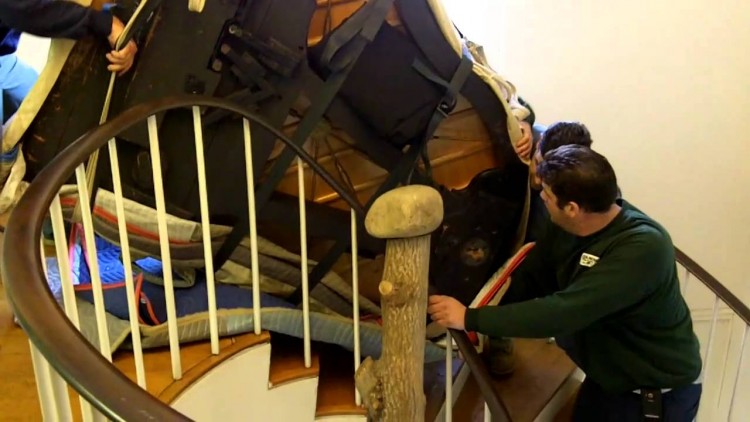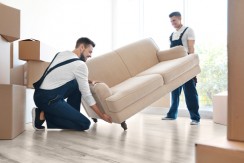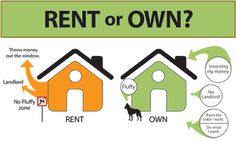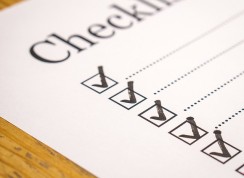
Your piano is your pride and joy. Just because your removal service says they’ll have no problem getting your piano out of the door and into the van, don’t assume they know how to handle a piano correctly. You of course understand that your piano is a fine and delicate piece of musical apparatus. Your average non-musical removal company might not.
It really is worth the additional cost to ensure your home removal company has specialist knowledge when it comes to moving your piano. The intricate inner workings of your piano can be easily damaged when your piano is moved. Your precision tuning may never be the same again if your piano isn’t handled properly during a move. I had Nice Man BIG Van help with moving my piano when I moved home in Brighton, and I’m sure glad I did after hearing some of the horror stories my friends have suffered over the years with precious instruments and timeless heirlooms.
Moving an upright piano
1. You’ll need assistance
A minimum of 5 people in average physical shape should be enough, but the more of you there the better. Don’t be tempted to get children to help, and definitely don’t ask anyone with a history of back problems. Anyone with any back, hip, leg or arm injuries should be excluded from your moving team.
2. Wear suitable clothing
Avoid tight clothing that will restrict you from squatting. Also, don’t wear baggy clothes that may become caught during the move. Remove jewellery such as necklaces or bracelets. It’s best to wear trainers or shoes with treaded soles so you have some grip. Work gloves with treated palms will help you get a better grip on the piano.
3. Lock the keyboard
We know an obvious thing to point out, but you’d be surprised how many people just close the lid without securing it. Piano keys can be easily damaged during a move. If the lid over your keyboard doesn’t lock, secure it with tape that won’t remove the wood stain (masking tape or electrical tape will do the job).
4. Wrap in blankets or other thick padding
Padding will protect your piano from surface scratches and other potential damage during the move. It will also serve to protect surfaces in your home during the move. Be sure to leave any moving handles free (often found on the outer frame at the back). Secure blankets with masking tape or electrical tape.
5. Casters
Pianos should not be moved around on their metal casters. The casters are decorative rather than functional and may not be strong enough to support a moving piano. It may even be prudent in some cases to remove the legs to protect against damage. On upright pianos, the two front casters are very weak decorative legs. Piano legs are commonly broken during transit when the piano is pushed along. Trying to move a piano in this way may also gouge hardwood floors or tear carpets.
6. Consider using a piano dolly
To avoid breaking casters and piano legs, it is a good idea to use a 4 wheel piano dolly. A piano dolly generally has 4 wheels and a flat surface on which to balance your piano. When balanced properly on a piano dolly, the piano becomes almost weightless and is easily moved on level surfaces. On inclines or ramps, the pianos true weight will be expressed at the low end of the incline. So you’ll need a team to manage moving the piano up and down ramps.
7. Clear a path
Move any furniture or rugs and be sure children or animals aren’t going to get in the way. Prop doors open (or get an extra helper to hold the door open for you). Think about the best route before you start moving.
8. Use ramps where necessary
If there are any steps, you’ll need to use a metal stair ramp. Most removal companies will have these. If you are moving everything yourself, be sure to organise ramps (as many as you need) prior to the moving day. Ensure all ramps are in place before you start moving your piano. The most important advice when moving your piano is to plan ahead and don’t skimp on preparing your piano for the move. It could save you a lot of money in repairs.
Carrying a piano up and down stairs

Once your piano has been suitably disabled and wrapped you may need to move your piano either up or down stairs. This is the most dangerous part of piano moving. It’s the time when you will most need a number of people to help you. It can easily go out of balance and cause damage to walls, floors or severely hurt the people who are moving it.
Keeping your piano safe on the removal van
Once your piano is in the back of the removal van, remove your piano from the piano dolly. Face the piano, keyboard side, against the removal van wall (leave all padding on). Secure the piano with suitable straps to the wall of the van. Never transport a piano still on the dolly as it could cause unrepairable damage to both your piano and other furniture during the move if it were to break free.
Are you looking to buy property in UK ? Hurghada , Scotland , Istanbul , Sahl Hasheesh , Dubai
Are you looking to rent property in UK ? London , Manchester , Reading , Leeds , Cardiff











Author
Homesgofast com
Homesgofast.com is an international real estate portal and news source for Google news. Publishing international real estate, finance, homes and travel-related news and blogs for a targeted audience since 2002. Each news item is circulated to thousands of potential readers each day and is also available to the millions of people who sign up for Google news alerts. Find homes offered for sale and to rent direct from owners and some of the best real estate agents from over 35 countries